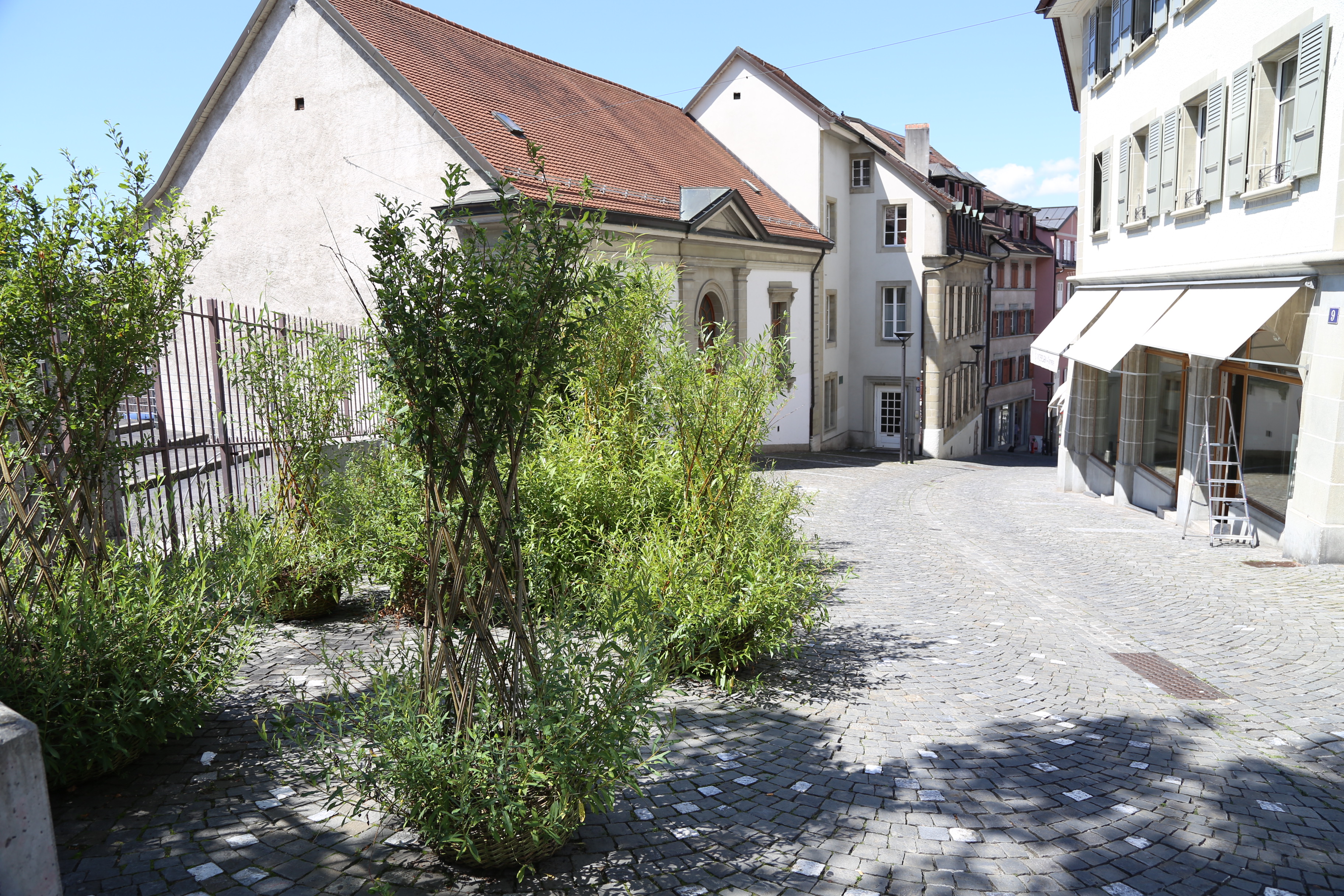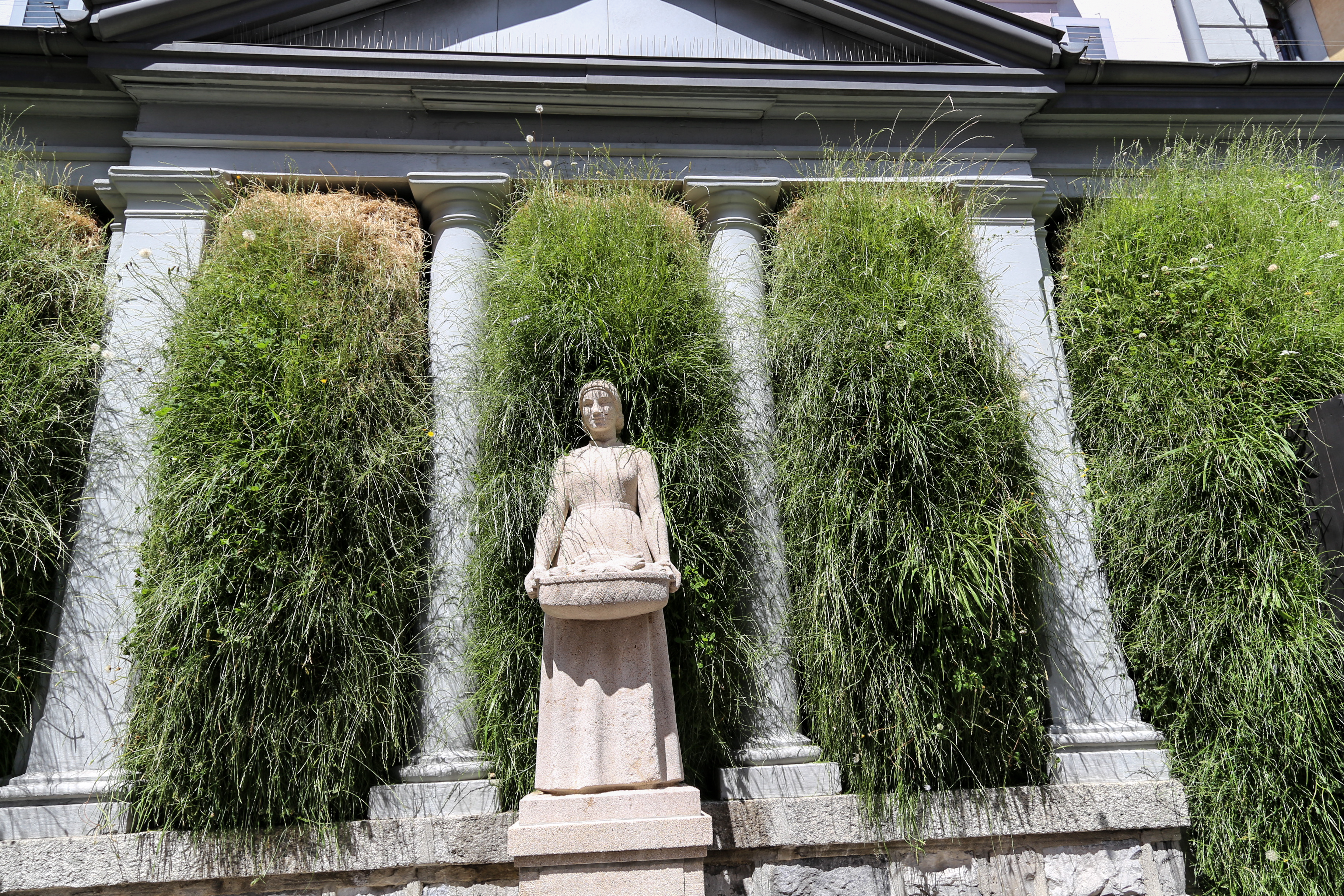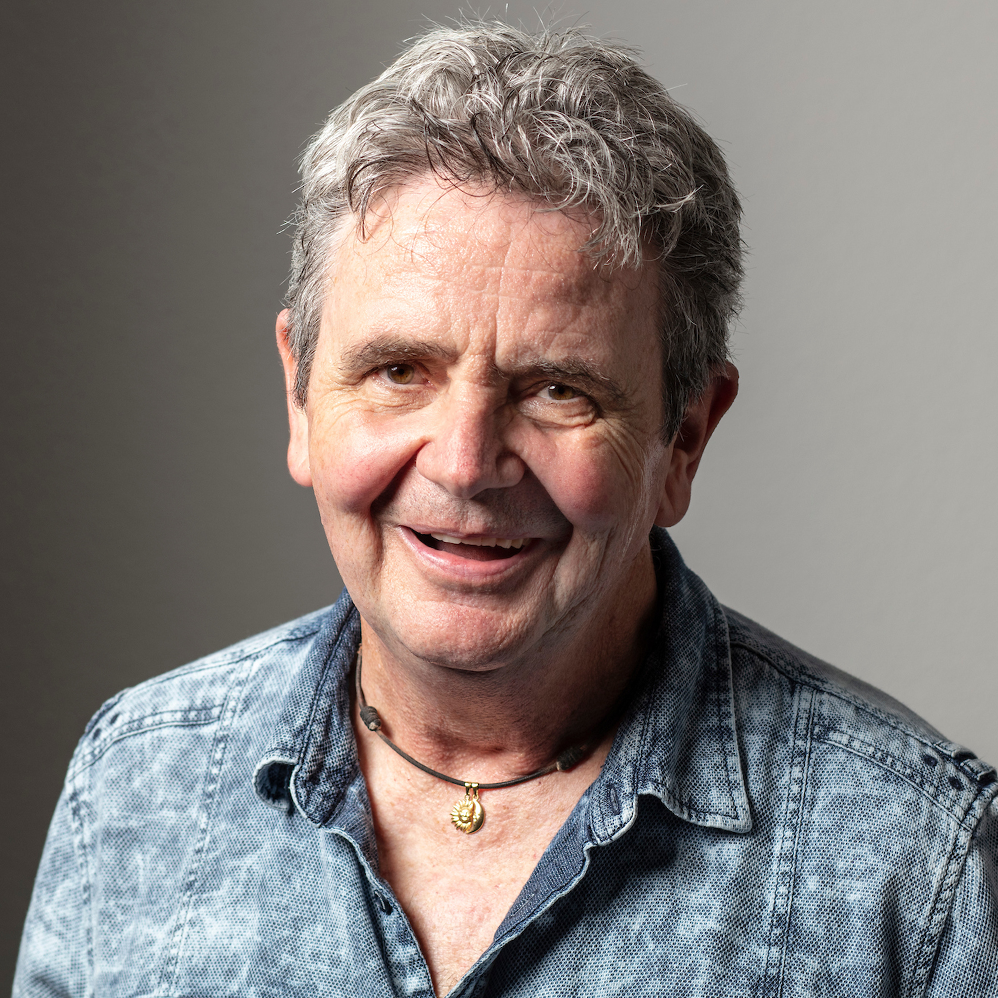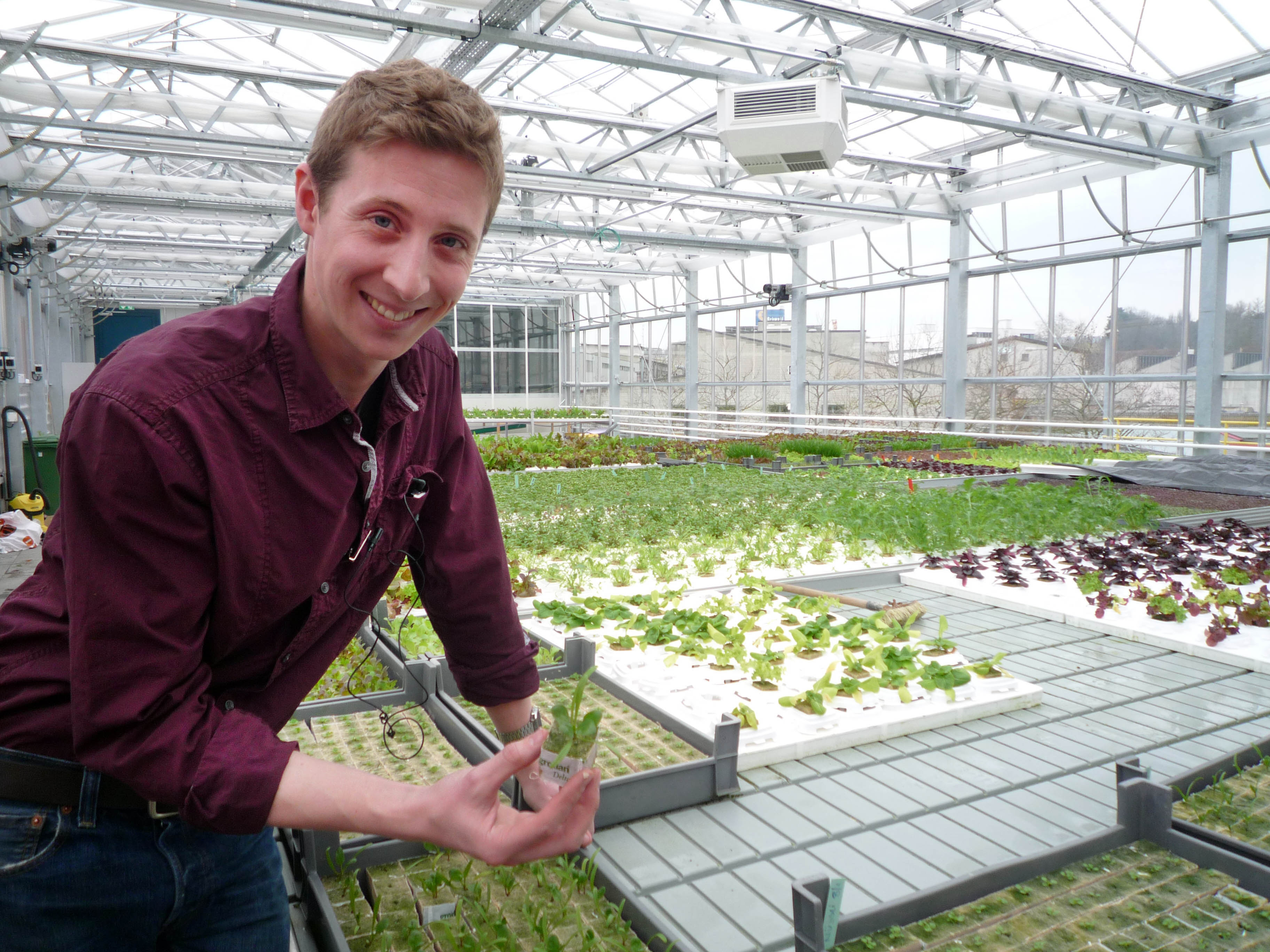When gardens take over a city

More and more cities are searching for new ways to implant green spaces into urban centres. This year’s Lausanne Gardens (Lausanne Jardins) has transformed the city into a playful laboratory for all things green.
It began when Swiss designer, Adrien Rovero, and French landscaper and architect, Christophe Ponceau, looked at a map of the city centre and, each taking 15 seeds in hand, let them go with the idea that wherever they landed, a garden would be created. Participants in Lausanne Gardens in 2009, the pair are back this year as the creators of the event which they have dubbed ‘Landing’.
“The seeds fell just by chance and the variety of places really reflects the topography of Lausanne,” said Rovero. “They are in the little streets, the squares, in the parks, on terrace roofs…”
That’s not to forget the other dimension of the city that does not appear on the map: Lausanne’s hills. The steep roads, stairs and views all contribute to the charm of the historic centre where the layout of the public spaces has changed little since the Middle Ages.
It is also a green city. Sitting with its feet in the lake and head in the trees, Lausanne is full of parks, gardens, walks, trees and vegetation. The forest is just a stone’s throw away and there is even a scrap of it which exists in the hip post-industrial quarter on the southern edge of the Flon Esplanade.
It’s here, in a narrow cul-de-sac between two recently renovated stone warehouses that a hanging garden can be seen; pots and plants cling to lines suspended over the little street from one window to the next, creating a symbolic link between neighbours. In Naples, they hang their washing; here it’s the vegetation hanging on the line.

More
Splashes of green on the cityscape
Privileged city
Held every four or five summers since 1997, the central idea of Lausanne Gardens is to add greenery where normally there isn’t any. To astonish, surprise and amuse the person passing in the street, enticing them to question their own relationship to the city and the greener world.
“Is the city a landscape?” mused Thierry Meyer, editor-in-chief of local daily newspaper 24 Heures. “Should nature be boxed up? Is the available space inalterable? Does construction necessarily mean destruction?”
“[We can say] that Lausanne is a privileged city which makes it ideal for this kind of experiment,” said Ponceau. “Every four or five years, the 330 gardeners of the city have the opportunity to try things out and to pit themselves against other artists.”
Supported by the parks service of Lausanne’s city council – not just for the watering which cannot be completely automated – Lausanne Gardens also welcomes international participants chosen from among landscapers, and design and architecture students who entered a competition. For this fifth edition of the event, the jury chose 27 projects, including nine European and two American projects, from among some 400 proposals.
Universal yet unique
Is it trendy to put green into the city?
“Yes. Clearly. All the large metropolises are trying to do it on a more or less grand scale,” said Ponceau.
This year Geneva will inaugurate the first edition of its garden festival dubbed Geneva, City and Fields (Genève, Ville et Champs). Lausanne Gardens 2014 does not exactly fall in line with the ‘urban farming’ that is the subject of annual exhibitions in Brussels, Prague and Montreal, and of a travelling exhibition, Carrot City, which will make a timely stop in Lausanne this summer.
This year, Lausanne actually has only one site that is productive in the vegetable sense; a greenhouse for tomatoes which crowns an imposing building made entirely of windows that dates from the late 1950s.
“We have concentrated more on the form of the garden, rather than on the necessity of the garden in the city. That was another theme that interested us for this edition. In fact, if we compare ours to other festivals on the urban farming trend, we are, because of the size and the fact that it goes for four months, just about unique in the world,” explained Ponceau.
“Here, we are really in an urban garden. What interests us first of all, is to go where it is a bit more of a ‘challenge’ to install vegetation,” adds Rovero.
That is what sets Lausanne Gardens apart from other festivals like that of France’s Chaumont-sur-Loire where the gardens, even the most avant-garde of them, are distributed amongst other gardens.
On the contrary, in Lausanne some gardens really seem to fall from the sky, while others bloom in spaces that were already green. And then there are the things that are completely unexpected: a neoclassic façade literally puffed up with grass, the tufts escaping from between the columns. It’s an image which is funny, bizarre and vaguely post-apocalyptic, as if the plants were taking back their city.
Not just decoration
“That was not what we had in mind at all,” countered Ponceau. “Rather, we want to explore new ways to use or bring vegetation into the city, but a city that’s lived in. I see it as a different kind of response to other types of vertical gardens.”
Ponceau remains sceptical about the value of the new fashion for vertical gardens and vegetated façades.
“It can be justified in terms of integrating the landscape, looking at heat and insulation, but when it’s just decoration or a desire to surprise, it’s more debatable, especially because it uses a lot of water,” says Ponceau.
“Just wanting to have vertical plants, depending on where it’s done, can be sacrilege,” said Rovero, for whom the grass between the columns “works very well as part of a project that has a limited life span but it shouldn’t be perennial”.
But as has been the case with each edition of Lausanne Gardens, certain sites and ideas will be perennial. It is too early to say which ones, but the two creators are already leaning towards a new form of modular flower pots which, after a first outing in a pedestrian street in the centre of town, could spring up all over the city.
It is this experimental aspect of the project that particularly excites Rovero.
“We talk about a laboratory for research and development; it’s a lot more than urban decoration. With around 100 exhibitions, conferences and symposiums which take place at the same time, Lausanne Gardens is a real cultural event which people remember – because it only takes place every five years – and so they look forward to the next one,” he said.
Notably, the gardens are visited by many and vandalised by few, even in the so-called “hot” areas of town.
“I also think it’s very positive that all the future designers or architects at university who have worked on Lausanne Gardens have had to reflect on working with plants,” added Rovero. “They have learnt to respect them and to consider them as something living and not simply as a decorative element.”
Christophe Ponceau graduated as an architect from the Boulle School of Design in Paris. He is also a landscaper and artistic director of design, photography and graphic art. In 2000 he took part in the exhibition ‘The Planetary Garden’ at the Grand Halle de la Villette in Paris. He created the French pavilion at the Zaragosa international Expo 2008. More recently, he has worked on the garden of the new Foundation for Regional Contemporary Arts in Orlèans, France, and has developed projects combining ephemeral architecture, photography and landscaping in Detroit, USA.
Adrien Rovero graduated with a masters in industrial design from the State Art School of Lausanne. Active in the areas of furniture, light and scenography, he opened his workshop in Renens in 2006. Since then he has designed and conceived pieces for publishers across Europe and institutes that have chosen him for scenographic projects at the Pompidou Centre in Paris, the Grand-Hornu Images in Belgium or for the Museum of Design and Contemporary Art in Lausanne, three institutions which have also acquired his work for their collections.
(Translated from French by Sophie Douez)

In compliance with the JTI standards
More: SWI swissinfo.ch certified by the Journalism Trust Initiative


You can find an overview of ongoing debates with our journalists here. Please join us!
If you want to start a conversation about a topic raised in this article or want to report factual errors, email us at english@swissinfo.ch.